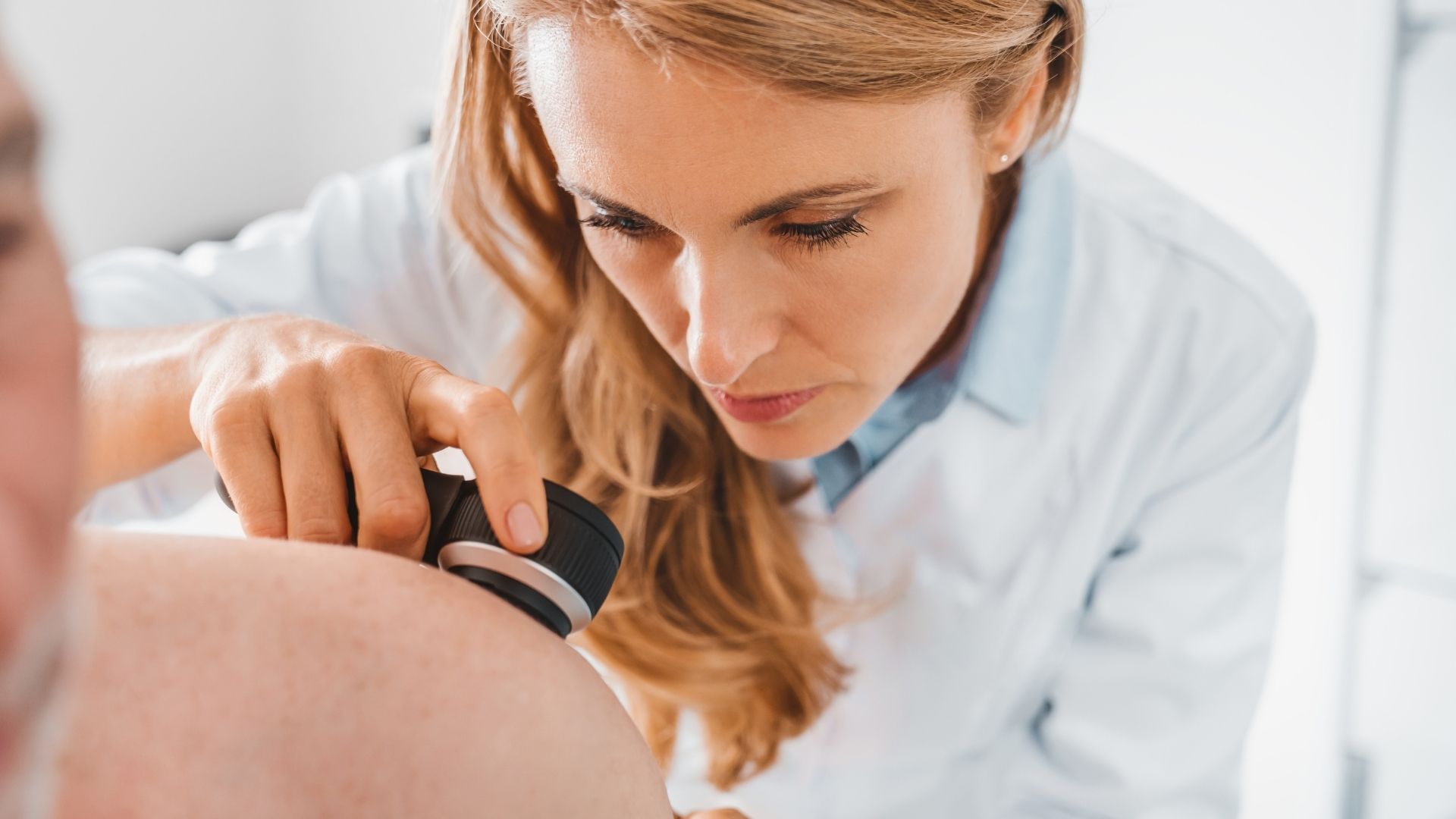
Skin cancer is the most common type of cancer in the United States. According to the Skin Cancer Foundation, in the United States, more than 9,500 people are diagnosed with skin cancer every day. It is also estimated that at least 1 in 5 Americans will develop skin cancer by age 70. Skin cancer can affect anyone, and it’s essential to be aware of the causes and symptoms. (The Skin Cancer Foundation, 2022)
May is Skin Cancer Awareness month, and it is vital to speak about the dangers of skin cancer so more lives can be saved.
Types of Skin Cancer
Skin cancer is the abnormal growth of skin cells and most often develops on skin exposed to the sun. The most common type of skin cancer is Basal Cell Carcinoma. It forms in the basal cells at the bottom of the skin’s outer layer. Basal cell carcinomas usually appear as small, flesh-colored bumps or patches. They may also appear as a scabbing or bleeding sore that heals and returns. Basal cell carcinomas rarely spread to other parts of the body and are not fatal, but if left untreated, they can cause disfigurement and damage to surrounding tissues. Sometimes, people can even lose part of an ear or nose.
Squamous Cell Carcinoma is the second most common type of skin cancer. It forms in the squamous cells at the skin’s outer layer. Squamous cell carcinomas usually appear as firm, red bumps or scaly patches. They can also look like open sores that bleed or crust over. If left untreated, squamous cell carcinomas may develop into a large mass. Squamous cell carcinomas can spread to other parts of the body and are sometimes fatal, but they are highly treatable.
The third type of skin cancer and the most dangerous form of the disease is Melanoma. Melanoma forms in the skin cells that produce pigment called melanocytes. Melanomas can appear as new moles or as changes to existing moles. They can be black, brown, tan, blue, white, or any color. Some of the signs of melanoma include a large brownish spot with freckles, a mole that changes in color or size, or bleeds, a painful lesion that burns or itches, or a small lesion with an irregular border with portions that appear pink, white, red, black or blue.
Melanoma can develop anywhere on the body and affect people of any skin tone. Melanoma can also occur on skin that has not been exposed to the sun. Melanomas can spread to other parts of the body and are sometimes fatal, but they are highly treatable. (Mayo Clinic, 2020)
Prevention of Skin Cancer
Most skin cancers are caused by too much exposure to ultraviolet (UV) rays from the sun, sunlamps, and tanning beds. The best way to prevent skin cancer is to avoid ultraviolet (UV) radiation from the sun and tanning beds.
Protection from the Sun
It’s essential to protect yourself from UV rays throughout the year, not just during summer. UV rays can reach you even on cloudy and cool days. Here are some steps to protect your skin:
- Use a broad-spectrum sunscreen with a sun protection factor (SPF) of 30 or higher. If you are going to be in the sun, make sure to reapply sunscreen every two hours and after swimming or sweating.
- Wear protective clothing that covers your arms and legs.
- Wear a wide-brimmed hat to shade your face, neck, ears, and head.
- Wear sunglasses that block both UVA and UVB rays.
- Stay in the shade when possible.
(CDC, 2021)
Avoid Indoor Tanning
Tanning beds, sunbeds, and sunlamps expose users to high levels of UV rays. Over time, overexposure can lead to skin cancer, cataracts, and eye cancers.
It is also essential to get regular skin cancer screenings from a dermatologist so that skin cancer can be caught early and treated effectively.
Skin cancer is a serious disease that can be fatal, but it is also preventable. If you notice any changes to your skin that worry you or you are concerned about skin cancer, talk to your doctor. They can help you determine if you are at risk and offer recommendations for prevention and treatment.
Works Cited
The Skin Cancer Foundation. “Skin Cancer Facts & Statistics.” The Skin Cancer Foundation, 8 Mar. 2022, www.skincancer.org/skin-cancer-information/skin-cancer-facts/.
Mayo Clinic. “Skin Cancer.” Mayo Clinic, Mayo Foundation for Medical Education and Research, 5 Dec. 2020, https://www.mayoclinic.org/diseases-conditions/skin-cancer/symptoms-causes/syc-20377605.
CDC. “What Can I Do to Reduce My Risk of Skin Cancer?” Centers for Disease Control and Prevention, Centers for Disease Control and Prevention, 28 Apr. 2021, www.cdc.gov/cancer/skin/basic_info/prevention.htm.





